Photographer shares stories from inside the US Capitol on January 6
“The entire building had been breached. It was just chaos. It was mayhem. There were people streaming through the building, and there were a lot of very incongruent things happening…rioters were beating on police officers with these big wooden rods, throwing fire extinguishers at them, and spraying bear spray.”
Win McNamee, chief photographer at Getty Images, was in the US Capitol building covering the certification of the electoral votes on January 6 when the riot broke out. Although he and the other photographers present were aware that there was plenty of potential for unexpected news, they never could have predicted what was to come.
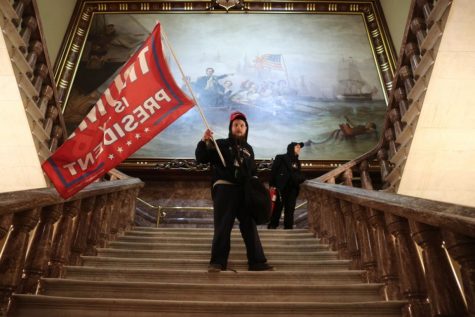
In his time as a photographer, 58-year-old McNamee has become familiar with life-threatening situations like the attack on the Capitol.
“I covered the first Gulf War, which I think was significantly more dangerous than this. I’ve been in lots of protests that have turned violent,” McNamee said.
McNamee has been engulfed in the world of photojournalism from a very young age. His own father was a photographer who covered ten United States Presidents, the Korean War, the Vietnam War, several Olympics and Super Bowls. Wally McNamee, who notably worked for The Washington Post and Newsweek, indirectly influenced his son through his passion.
“(Photography) was always around the house, I wasn’t really paying attention to it much when I was (a teenager), and it wasn’t until much later that I became interested,” Win McNamee said. “Once I became interested in it, I really started paying attention to everything my father had done, learning as much as I could from him.”
It wasn’t until college that his interest in photography truly blossomed. He began his postsecondary education as an undeclared major at the University of South Carolina with an attraction to the outdoors and interest in oceanography and forestry. It didn’t take long for him to find his way to photography.
It began as a hobby after his father gifted him a camera as a graduation present, which he only used to take silly pictures with his friends. McNamee did not originally seriously consider it until he was reintroduced to the field through a friend.
“There was a buddy of mine who worked for the student newspaper, who was also into photography a little bit, and he encouraged me to come by and start checking things out and doing some work there and it was great. I loved everything about it” McNamee said. “It was challenging and different everyday, and I had different assignments whether it was football games or concerts.”
The main reason he ultimately found himself so drawn to photography and photojournalism is the changing nature of the field.
“It’s a fun profession. You have an opportunity to do a lot of things that, frankly, I’d probably be doing if I wasn’t a photographer. I’d be going to (Washington Nationals) games. I mean, I go to like ten a year, but I probably shoot ten a year,” McNamee said. “I’m going to a different place each day, I’m seeing different people each day, different things are happening each day. That is one of the things I find most attractive about it.”
After working at a local newspaper for a couple of years after college, he moved back to the Washington DC area, where he grew up, where he freelanced for a couple of years, worked as a staff photographer for Reuters for 14 years, and then finally came on board with Getty Images in 2004.
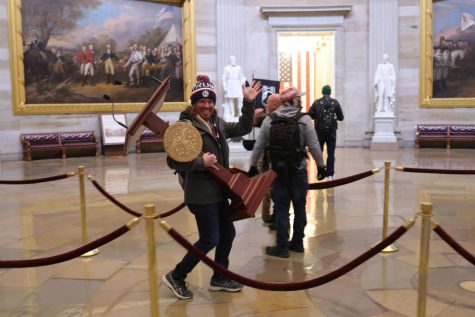
His interest in historical and social events, McNamee relished the opportunities to have his job and his interests blend together.
“I have an affinity for history and politics and social stories, like we saw last year in the wake of the George Floyd killing in Minneapolis. We had a lot of protests here in Washington, DC, and I find those to be fascinating and important, and they’re also extremely visual,” he said.
On January 6, two teams of photographers had been established to photograph all facets of the day’s events. There was an outdoor team set to cover the rally held by then President Trump, and to eventually follow the crowd the mile and a half distance from the rally to the US Capitol, and there was an indoor team set to cover what was unfolding with the House of Representatives and the Senate.
Stationed inside the Capitol, McNamee had been photographing the beginning of the certification process when chaos began to break out.
“I was in the process of trying to transmit some of my pictures from the joint session. While I was doing that, we noticed that there was a disruption happening on the West side of the Capitol, the site where the inauguration was scheduled to take place two weeks after. So I started to get very anxious about what was going on out there because I felt that that was the story and that I needed to finish up what I was doing and try to get out there,” McNamee said.
As it turned out, he didn’t need to worry about getting outside for photographs as the crowd, much to his disbelief, stormed the building.
“I never thought for a minute that the crowd would end up inside the Capitol. Well, within fifteen minutes or so of first seeing the crowd out there, we started to hear noises that indicated they had in fact gotten into the building and the whole day changed. All of the plans that we had made to cover the story were falling apart rather quickly,” McNamee said.
His new priority was to come down from the third floor and onto the second floor, where the disturbances were occuring, to photograph the new main event. There he was met with his first encounter with the day’s rioters: about 20-25 supporters of Trump who had come in from the East Senate side of the Capitol.
His first sight of the mob marked only the beginning of the day’s insanity. McNamee was met with more chaos as the rioters began to breach the Capitol building from all sides.
“Basically, the entire building had been breached at this point,” McNamee said. “I then worked my way down towards Speaker Pelosi’s office and I encountered more of the crowd down there, and I started to get some vibes from those folks that they weren’t real happy about me being there.”
Since McNamee had already worked in dangerous situations before, he was already mentally prepared for a negative reaction from the rioters.
“You have to read the room. You have to be constantly aware–it is called situational awareness. I have a thing I do where I look them in the eye, I talk to them. Just to say, ‘you’re a human, I’m a human, no problem here,’” McNamee said.
McNamee continued to work his way through the building, taking various pictures around the rotunda before making his way up to the third floor from the Senate side to take more. There, he captured his favorite photo of the day: the photo of a man dangling from the balcony of the Senate chamber.
“It’s just very reflective to me of the incongruity—this out of place nature of what was taking place that day. I mean, that’s the side of the Senate Chamber, and the Senate Chamber is probably one of the most regimented, decorum-laden places. To see some guy hanging from the balcony is kind of strange to me,” McNamee said.
He continued to navigate his way through the building, but shortly after McNamee’s return to the photo-filing station, security enforced a massive two and a half hour evacuation of the entire building as a way of removing everybody, primarily the rioters, from the building and ensuring everyone’s safety.
Despite the incongruity of the day’s events, McNamee never felt physically threatened during the attack; his “blissful ignorance” to the true nature of the events that occurred allowed him to stay calm and collected throughout the battles ensuing around him.
“If I had any idea of how violent it had become on the western side particularly, what it took for those folks to get inside, I probably would have been much more concerned about my personal safety,” McNamee said.
After finally understanding the reality of the situation, McNamee was more disheartened than he was fearful.

“I never thought for a second I’d see anything like what happened in the U.S. Capitol,” he said. “It’s one of the most iconic buildings we have in U.S. democracy and the U.S. government. To see it attacked by Americans was a painful thing.”
Amidst the madness, McNamee paid close attention to the courageous acts of the men and women who he believed were the heroes of the day; he felt that the Capitol police officers played a vital role in protecting the Capitol.
“There were a couple US Capitol police officers trying to defend that door unsuccessfully, but it’s one of the things that gets lost in the general telling of this story. The Capitol police sort of took it on the chin reputation-wise, but there were definitely some individual acts of what I would call heroism, trying to do their jobs while they were significantly outnumbered,” McNamee said. “If you were a law enforcement officer there, it was not a pleasant place to be.”
More than anything else, McNamee took immense pride in the work that he and his colleagues were able to accomplish as the chaos erupted that day.
“When I think about all the work that was produced by all of the photographers on Capitol Hill that day, it makes me a little misty-eyed—not because it’s sad but because I’m proud of it. (I’m) emotionally attached to my profession and the work that my colleagues and I do, which I think is important.”
One thing that he takes pride in is the truth that photographs present. While many media outlets are, or are perceived to be, biased, McNamee asserts there is no bias in the still image.
“The resilience of photojournalism has presented itself to be true and accurate and I think the events of January 6th reflect that quite strongly,” he said. “I’m not just talking about my pictures, but everyone’s pictures, whether they were inside or outside the Capitol building that day. There are definitely some iconic images that day that are going to end up in a museum. It is an important part of our shared American experience and it is something that I am proud to have contributed to.”
In a world that’s fully immersed technology, photojournalism has surprisingly survived the technological revolution. McNamee believes that it has prevailed since it provides an “unbiased, non-emotive, informative narrative without taking sides.”
The narrative of January 6th has morphed itself to blur along the lines of bias from all political perspectives in our country. No matter what side, there is one key takeaway that McNamee believes was reflected in the day’s events.
“I don’t think it’s a day anybody’s going to forget anytime soon. And that’s the one potentially positive benefit of that is that maybe it will serve as a turning point for people to be more reflective about the extreme sides people feel somewhat compelled to take on political issues now. Maybe that won’t be the case, I hope so. It’s certainly a lesson to me, anyway, how not to do things.”

Hi! I’m Alyssa Hillwig. I’m a senior, and this is my second year as part of The Oracle staff. You’ve probably seen me in the hallways and thought...



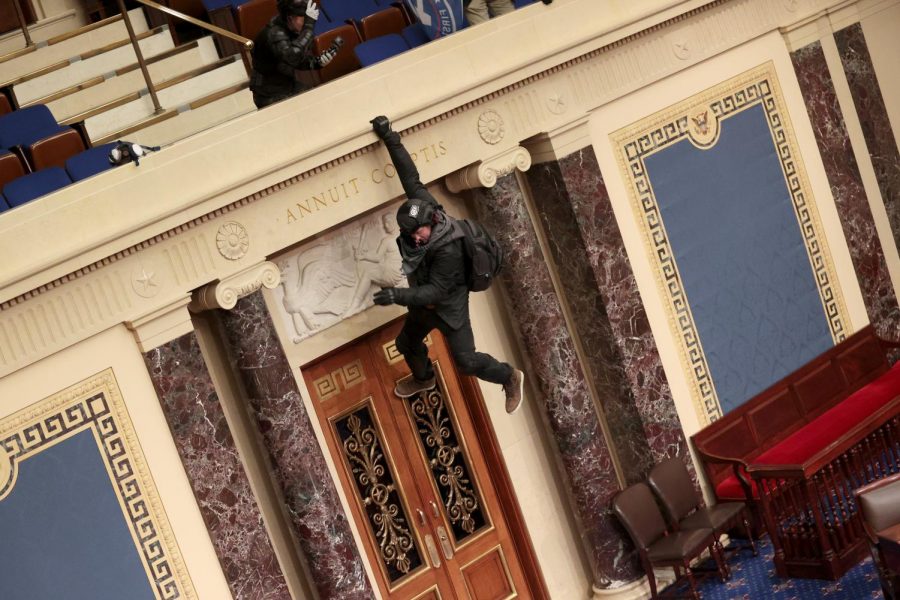

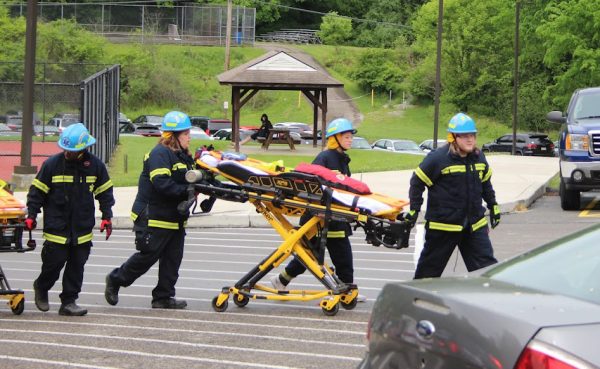
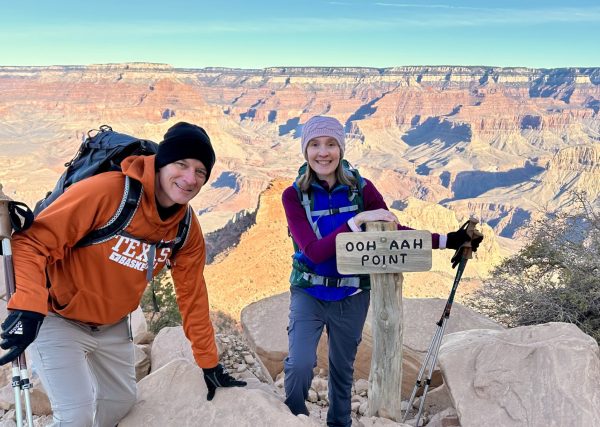
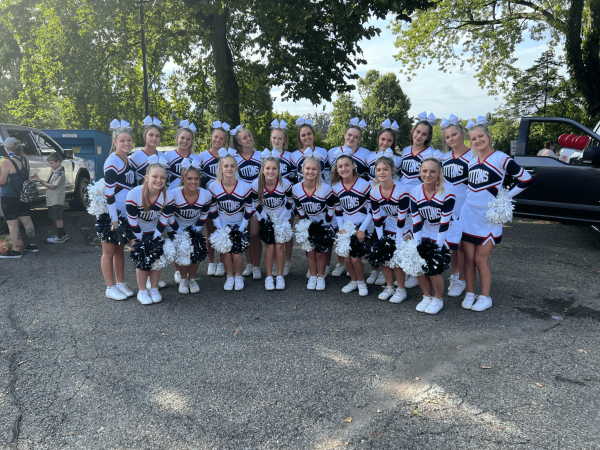
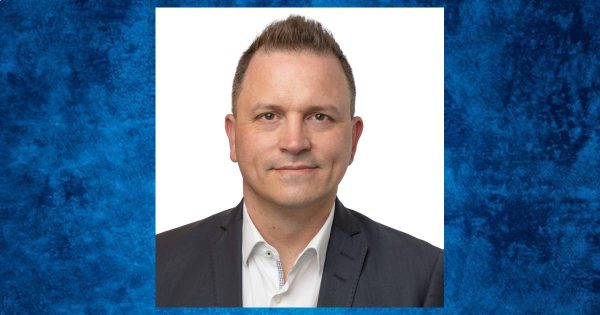
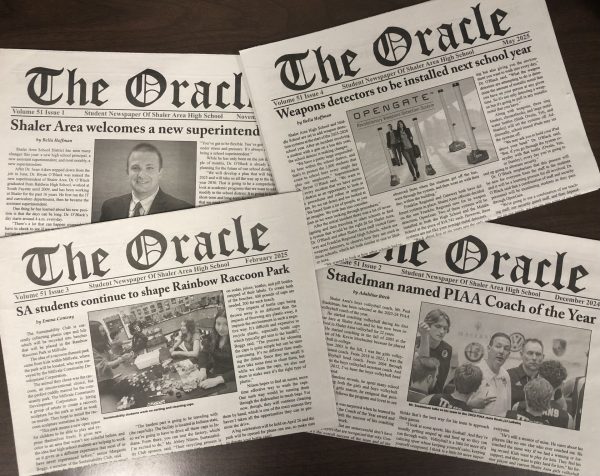

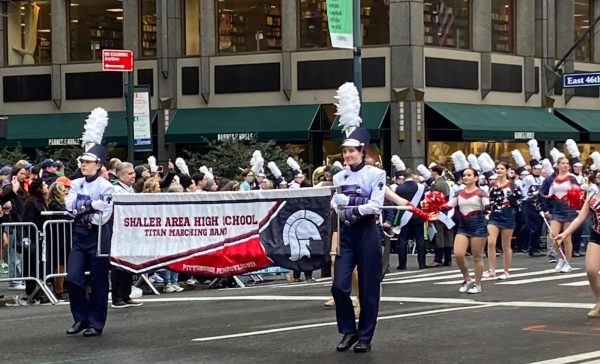
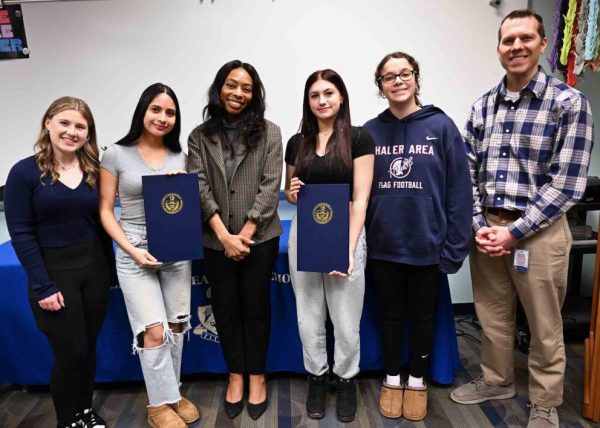
Mrs. Townsend - Assistant Principal • Mar 5, 2021 at 10:10 am
Great article Alyssa and way to go on making “Best in SNO”
Keep up the great news coverage!
Congrats- Mrs. Townsend
Brian Duermeyer • Mar 3, 2021 at 1:01 pm
What a story! Great job Alyssa, This is a riveting testimonial of Jan. 6.